Mathias Rust probably questioned his decision to fly again to Moscow.
In 1987, the then-19-year-old West German national breached the Soviet Union’s border in a rented single-engine Cessna, flew nearly 550 miles through what what supposed to be the country’s most heavily guarded airspace, and landed on a bridge near the Red Square.
After a show trial and a yearlong stint in prison, during which Reagan and Gorbachev inked the INF Treaty, Rust was released and allowed to go home.
It was now 2013. Rust had agreed to appear as a special guest on the talk show Pryamoi Efir, aired on one of Russia’s most widely-watched TV channels.
But, instead of being lauded as a daredevil hero that helped bring about the end of the Cold War, he had to endure a very public scolding and apologize for his actions. Worse still, he was forced to wrestle with a broad range of conspiracy theories about why his Cessna was able to proceed all the way to and land in the heart of Moscow.
The tone and substance of this conversation, parts of which I transcribe and summarize below for your reading pleasure, speak volumes about the ongoing attempts to question the legitimacy of Gorbachev’s leadership and, by extension, challenge the legitimacy of breakthrough security cooperation between Russia and the West that took place during the 1980s. This is both troubling and dangerous.
Before We Raise the Curtain
The hourlong show “Mathias Rust-A Dove of Peace?” [watch in Russian] began with introductory remarks about the incident. Its young host then directed some questions to Rust. After that, he pretty much let his studio guests take over the conversation and the editorializing, save for a few commercial break transitions.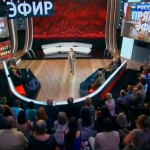
The text below is broken into several thematic Acts. The direct quotes are provided in quotation marks, as appropriate. However, because the key lines of argument were circular in nature, I summarized them together in Act 3 instead of providing a verbatim transcript. All of Rust’s remarks were dubbed by the show from German into Russian, so my translation is from that Russian.
Also, a small point of clarification before we begin: After Soviet air defense downed the KAL 007 flight in 1983, killing 260+ souls, an executive order changed procedures for engaging airspace intruders. Essentially, the decision to open fire now would have to be made on a much higher level. This, arguably, intended to protect the Soviet civilian and military leadership from dealing with the damaging political consequences of a similar incident (note, by the way, that Soviet air defense downed another KAL flight, the 902, in 1978). Thus, the counterfactual used in many of the emotional appeals below–if Soviet air defense had downed Rust’s Cessna in 1987, there would have been fewer negative consequences for the military–couldn’t be further from the truth.
And, finally, the disclaimer: the opinions expressed in this post are my own and not those of my employer or the University of Maryland, where I’m still a graduate student.
Act I: An “Alleged” Bridge of Peace
Host [to camera]: To talk to Gorbachev, [Rust] allegedly flew half the country without any obstacles and allegedly without being noticed. A lot of people didn’t believe this. Some said that this act was planned by secret services. But, if so, which [services]? … Some had benign explanations—Rust did the flight on a dare or even to get a girl.
Host: But behind the innocent humor lay a trauma for the Soviet military since General Secretary Gorbachev had used the incident as a pretense to fire 200 military officers including the [Soviet] Minister of Defense Sergey Sokolov and the head of [Soviet] Air Defense forces… Could it have been a coincidence that these were the individuals who were blocking the perestroika of the General Secretary?
Host: Today, Mathias Rust will look into the eyes of those whose lives he really turned upside down with his actions.
Host [to Rust]: Mathias Rust, in Russia again. Good evening!
Host: It’s been 26 years. It’s understandable that at that time you couldn’t talk about everything. But, now, tell us the truth… Why did you do this?
Rust: I used this flight to fight for peace. I wanted to create an imaginary bridge of peace. This was a time when the West was distrustful of Gorbachev’s peaceful initiatives. And I thought that I could intervene and also underscore that many people in Western Europe wanted peace as much as Gorbachev did at the time.
Host: I have a feeling that I’m taking this interview on the Red Square on May 28, 1987. Because this is exactly what you said when you were exiting your airplane back then.
Rust: That’s right. It’s been 26 years, and you can say that it feels that way.
Host: You were just 19 at the time. How did you decide to do this?
Rust: That was the reason exactly. I was very young. Now I probably would not have enough courage.
Host: How long did you prepare for this flight?
Rust: About six months… While I gathered all the maps, made the decision, and understood how best to fly to Moscow… in a theoretical sense, of course.
Host: If it took you six months, then you are contradicting what you had said previously. This was not done on a whim. Had you been to Moscow before?
Rust: I had not been to Moscow before. I became interested in politics when I was 15. I was so convinced that I was doing the right thing that I actually ended up going through with the flight.
Act II: We Value Human Life
An older, blond, and heavily made-up TV personality intervened with exasperation.
Older, blond, and heavily made-up TV personality: Did you realize that you could kill people… on the Red Square and during your flight?
Rust: Of course I had thought of this and all the risks related to this flight, and the risks this had for other people. But I had supposed that the risk was so small, that I could responsibly take it in order to build this bridge of peace.
An older, blond, and heavily made-up TV personality: What do you mean by small? If you had killed even one person, the risk you took would not have justified itself. Our peaceful-loving country did not touch you.
[The audience breaks into applause.]
Older, blond, and heavily made-up TV personality: Do you understand? It did not shoot down your aircraft… Because we value human life. And you… You flew…
Host [to Older, blond, and heavily made-up TV personality]: Admittedly, we had different ways of treating aircraft above our country…
Host [to Rust]: You said something amazing here. You were certain that the risk was small, but you were crossing one of the most heavily-guarded borders in the world, with one of the strongest air defense systems, and you say that the risk was small. What made you so be relaxed about this?
Rust: I think that this was idealism. I was young and, at 19, some things look much simpler.
Act III: The Curious Case of the Missing Trolleybus Wires
As if on cue, someone turned up the crazy dial. A series of “journalists and TV hosts,” “retired air defense officials,” “historians,” and “experts” went on the offensive. Rust was not a dove of peace, they claimed, he was just someone’s pawn. They peppered him with questions, let Rust attempt to answer them, and then offered their own speculations as final responses.
Why did you choose the Soviet holiday of Border Guard’s Day for the overflight? This choice had to have been deliberate.
Why were there professional cameras on the Red Square to film your landing? This was clearly staged.
Why was the overhead electrical wiring for trolleybuses removed from the bridge where you ultimately landed? The only explanation is that your landing was anticipated.
Were you aware that, prior to your flight, the Soviet the air defense field had not been updated for four straight days? It’s usually done on a daily basis. “The Soviet Union was expecting you with open arms.” 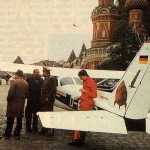
These were all coincidences, Rust maintained. I had no idea.
What was the speed of your Cessna? Your speed estimate is wrong. Take your cruising speed and the distance traveled, you should have been able to get to the Red Square in 4 hours.
Why did it take you 6 hours and 15 minutes instead of 4 hours to get to Moscow? You had to have landed your aircraft on Soviet territory to refuel.
At this point, Rust insisted that the “experts” were overstating the speed of the Cessna and that, instead of landing to hide from the interceptors, he descended and continued toward Moscow. There, he circled for an hour looking for a place to land.
Where did the atomic bomb sticker on your aircraft’s tail, visible in the Red Square images, come from? The pilots of the interceptors that were scrambled to identify you were certain that this sticker was not there at the time.
Where did you put on your orange jumpsuit? You had to have put it on when you landed to refuel and hide from the interceptors.
Rust denied all of these claims, explaining that the sticker was there before and that he had a lot of clothing, including the orange jumpsuit, on in order to stay warm during the flight.
Act IV: Just a Boy and His Plane?
As per the host’s hints at the beginning of the show, the key argument eventually emerged. Studio guests coalesced around the claim that the success of Rust’s flight was the result of a conspiracy between Gorbachev and intelligence services—either Soviet or Western. One of the guests, former Soviet ministry of defense official and failed nationalist presidential candidate Leonid Ivashov, articulated this explicitly.
Ivashov: I have no doubt that this was a special operation.
Host: If this was an operation, then who carried it out? With what aim?
Ivashov: […] Rust here maintains that he was just a boy and he was flying. You know, I was chief of the general affairs department in the Soviet Union’s Ministry of Defense. And we looked at all the maps. First, he had a deep and precise knowledge of all radar coverage and he flew accurately through the zones which were not visible to radar.
Rust: I didn’t plan this. I didn’t know this. It just happened this way and that’s why my flight was so successful.
[The audience boos.]
Ivashov: Second, the aircraft he chose was a Cessna, the reflection from which is identical to flocks of birds.
At a later point in the show, however, the host and most of the studio guests agreed the air defense radar tracked Rust during his whole flight and the air defense forces scrambled interceptors. But now, they posited that Rust was successful because high-level air defense officials did not give a command to open fire. Instead, they said “this is a flock of birds, don’t shoot it down.” Nevertheless, Ivashov returned to his argument about Gorbachev a little later…
Ivashov: I don’t have questions for Mr. Rust. He was used and mostly kept in the dark. But we feature him as the main perpetrator. This is not so. Let me give you two facts.
Ivashov: First, in March 1987, Mr. Gorbachev calls Minister of Defense Sokolov and asks for a brief on the air defense system, its European part. The Marshal goes to Gorbachev, and, upon his return, we realize that he doesn’t have a classified air defense map with him. So I go and tell [Sokolov] that he didn’t return this map. He says that [Gorbachev] asked to leave this map. I call Gorbachev’s assistant and ask him for some verification in writing. […] And then I come to them the next day, and they search everything and can’t find it. We wait for Gorbachev and ask him […], and he says, “what, do you think I carry it with me?” We couldn’t find this map for months, until the State Committee on the State of Emergency [aka, the coup against Gorbachev].
Ivashov: Second, when Gorbachev got into arms reductions and disarmament, he had a strong military opposition, with Marshal Sokolov at its helm. […] So, he had to cleanse the military.
Act V: Pensioners Storm the “Bridge of Peace”
Another line of attack followed. Supported by the host and several “experts,” a retired air defense officer “went in for the kill.”
Retired air defense officer: How would you look in the faces of the people who, as a result of your actions, died from a heart attack, were demoted in rank, went to prison, lost their pensions? […] If you could look in their eyes, the eyes of their wives and children, and all of the people who you harmed with your dove’s flight.
Rust: I wasn’t the one making these decisions. Gorbachev made these decisions, and then he used my flight to remove individuals that were against him.
[The audience boos.]
“Journalist and tv host”: How can you sleep at night for these 26 years? There are people who were imprisoned because they saved your life. If they had shot you down, you would probably not be sitting here today and these people would be alive and not have been imprisoned.
The Grand Finale
Eventually, after 20 more minutes of “surround bollocking,” it was all over. The show cut to Rust’s admission of guilt and apology at his 1987 trial. Rust again was asked to apologize for his actions. He complied and said that he was sorry.
In a move that added a layer or absurdity to an already surreal hour of prime time television, the young talk show host closed with the following:
Host: This was a time when new wars were beginning to occur, information wars. Their tell tale sign is when the truth is mixed with lies… Maybe the main conclusion from this whole story for us today is that information wars did not end [with the end of the Cold War]. Today, they are going strong. The only way to survive through them is to have the ability to tell the truth from lies. And we should learn to do that.
And so, there you have it. Everything you’ve ever wanted to know about 1987 Soviet paranoia–and its recent revival–but were afraid to ask. And, if you wish, a palate cleanser with some facts is available here.
A Concluding Note: Like Synthpop, Rust Has Come Back in Style
In 1987, several West Germans known as Modern Trouble released a synthpop “anthem” titled “Fly to Moscow.” Inspired by Rust’s flight, the single featured a dedication to Marshal Sokolov. Looking back, these lyrics still offer a decent summary of the incident.
Modern rebel Mr. Rust
Showed the world Moscow or bust
Flying in Red Baron’s shoes
Zig-zag course that leaves no clues
Kremlin says this can’t be true
Heads will roll ’cause this won’t do
Reuters, Tass, and CBS
Said this story was the best
However, the song itself, as well as the accompanying instrumental Air Defense Mix were pretty terrible. This is despite the fact that 1987 was still a relatively good year for synthpop.
Today, like synthpop, the story of Mathias Rust has come back in style. But instead of listening to good (or even decent) synthpop of both yesterday and today, and learning the right lessons from the Rust incident, some prefer to live in an alternative reality and listen to replays of Modern Trouble. And, that’s more than just shameful… It’s a sin.
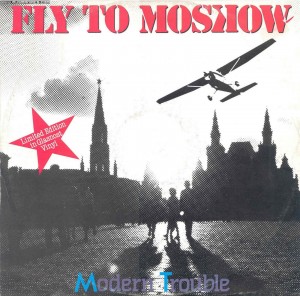
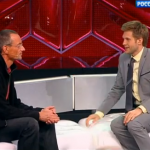
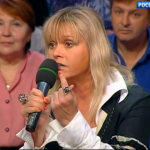
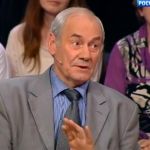
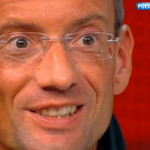

Those ex middle level air defense officers may have a reason to bitter. But they are barking the wrong tree.
One particular ex navy officer would have made great addition to studio audience… Igor Britanov. Can’t believe his missing was unintentional.
“You were certain that the risk was small, but you were crossing one of the most heavily-guarded borders in the world, with one of the strongest air defense systems, and you say that the risk was small. What made you so be relaxed about this?”
Well, Rust proved, beyond a reasonable doubt, that this was not the case.
Seriously, this just a sign that the Soviet Union was already in dissolution and neither administration nor military was effectively working anymore.
Why do they seem so surprised about it?
I know this is a fun story, but is anyone seriously suggesting that the radar profile / knots of a Cessna would cause a radarman to mistake it for a war plane?
I suspect local AFBs would have scrambled had he been cruising in a B52 heading toward Moscow.
Fighters were scrambled; Rust explicitly reported that he had been intercepted and closely inspected by MiG-23s. He just wasn’t shot down, in large part because shooting down civilian aircraft had gotten the fUSSR in diplomatic hot water only a few years earlier. Russian sources claim that Rust’s plane was misidentified as a stray from a local flying club.
Generally speaking, the human element of any security system can usually be defeated by confidently acting like you are authorized to do whatever it is you are doing, provided what you are doing isn’t similar to anything that has caused a security breach in recent memory.
More specifically, there probably ought to be a procedure for what the interceptors do when the bogie doesn’t need to be shot down but shouldn’t be ignored. The United States, with a lot more private planes and amateur pilots, has such a procedure. A pilot who doesn’t go along with the process probably won’t be shot down, but will be met by a helicopter full of heavily armed law enforcement officers shortly after he lands.
Well, not exactly a close look…
The cruising speed on a Cessna 170 is 105 knots, the landing speed on a MiG-23, which is just above it’s stall speed, is 165 knots. That means at a minimum the interceptor pilots were trying to figure out what the heck this guy was up to while flying past him at close to 70 MPH. It’s somewhat doubtful they could have read the registration number off the side of the aircraft, much less the decals.
One could certainly argue that the Voyska PVO (air defense) guys did their job. The detected and intercepted his aircraft, and decided that it wasn’t an immediate threat. At that point they could either shoot it down or let it fly on, but they could neither communicate with it or force it to land.
The “stray from a local flying club” explanation would certainly have made more sense to all involved, but this points out the problem with Ockham’s razor, sometimes the simplest answer is NOT correct.